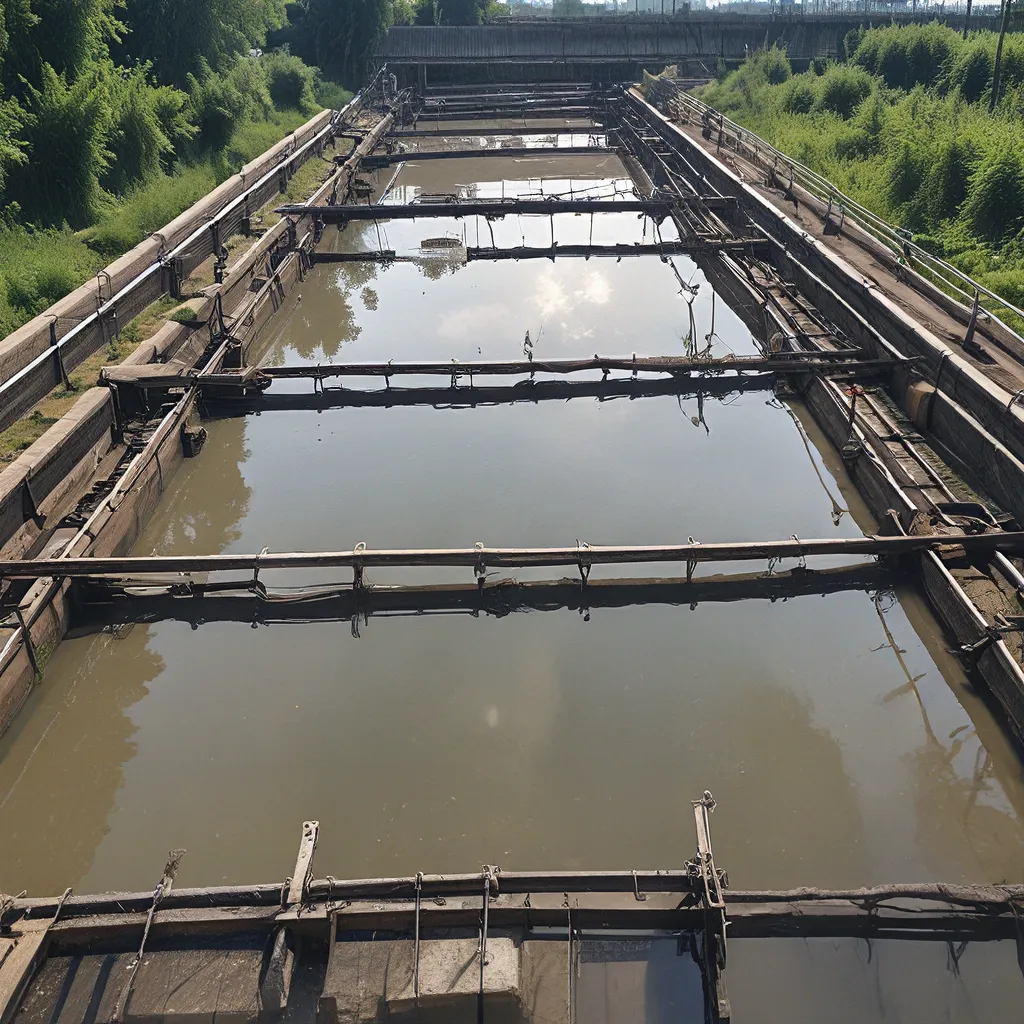
As an environmental enthusiast, I’ve always been fascinated by the intricate processes that transform our wastewater into clean, reusable resources. Recently, I stumbled upon an exciting development that’s revolutionizing the way we approach this critical infrastructure – the integration of distributed ledger technology, also known as blockchain, into wastewater treatment systems.
Unraveling the Complexities of Wastewater Treatment
Wastewater treatment is a multifaceted process that involves a series of physical, chemical, and biological steps to remove contaminants and make the water safe for reuse or discharge. From primary treatment to secondary treatment and beyond, each stage plays a crucial role in transforming the dirty, polluted water into a valuable resource.
But as complex as the treatment process itself is, the management and oversight of these systems can be equally daunting. Ensuring transparency, traceability, and regulatory compliance across numerous facilities, operators, and stakeholders is a constant challenge. This is where distributed ledger technology comes into play, offering a transformative solution.
Blockchain’s Role in Wastewater Management
Imagine a world where every step of the wastewater treatment process is meticulously recorded, verified, and accessible to all relevant parties. That’s the promise of blockchain technology in the wastewater industry.
By leveraging the distributed, decentralized, and tamper-resistant nature of blockchain, wastewater treatment facilities can create a comprehensive, transparent record of their operations. From the initial collection of wastewater to the final discharge or reuse, every data point – such as chemical dosages, flow rates, and treatment efficiency – can be securely logged and shared across the network.
This level of traceability not only enhances accountability but also enables real-time monitoring and early detection of any irregularities or non-compliance issues. Regulatory agencies and the public can access this data, fostering a new era of trust and collaboration in the wastewater management sector.
Enhancing Operational Efficiency
But the benefits of integrating blockchain into wastewater treatment systems go beyond just transparency and traceability. By automating various aspects of the treatment process through smart contracts, wastewater facilities can achieve remarkable operational efficiency.
Imagine a scenario where chemical dosages are automatically adjusted based on real-time sensor data, ensuring optimal treatment performance. Or a system where predictive maintenance algorithms analyze historical data to proactively identify and address potential equipment failures before they disrupt operations.
These automation capabilities, powered by blockchain-based smart contracts, can streamline decision-making, minimize human error, and ultimately improve the overall cost-effectiveness of wastewater treatment. In an era of ever-tightening budgets and heightened environmental scrutiny, such efficiency gains are invaluable.
Fostering Collaboration and Innovation
The implementation of distributed ledger technology in wastewater treatment also has the potential to drive collaboration and innovation across the industry. By creating a shared, transparent platform, wastewater facilities can more easily share best practices, research findings, and technological advancements.
Imagine a scenario where a breakthrough in microbial bioremediation is instantly shared across the network, allowing other facilities to quickly adopt and implement the new technology. Or a case where real-time data analytics uncover new insights into the relationship between wastewater composition and treatment efficiency, leading to groundbreaking process optimizations.
This collaborative environment, facilitated by the decentralized nature of blockchain, can foster a culture of continuous improvement and innovation, ultimately benefiting the entire wastewater management ecosystem.
Navigating the Challenges
Of course, the integration of distributed ledger technology into wastewater treatment is not without its challenges. Issues such as data privacy, cybersecurity, and regulatory compliance must be carefully addressed to ensure the successful deployment of these innovative solutions.
Collaboration between technology providers, wastewater operators, and regulatory bodies will be crucial in developing robust governance frameworks and data management protocols that safeguard sensitive information while maintaining the transparency and traceability that are the hallmarks of blockchain technology.
Additionally, the technical complexity and infrastructure investment required for implementing blockchain-based systems may present hurdles for some smaller or resource-constrained wastewater facilities. Innovative financing models and capacity-building initiatives will be necessary to ensure equitable access to these transformative technologies.
The Future of Wastewater Management
As I delve deeper into the convergence of wastewater treatment and distributed ledger technology, I can’t help but feel a sense of excitement and optimism about the future of this critical industry. The potential to enhance transparency, improve operational efficiency, and foster collaborative innovation is truly remarkable.
While challenges and uncertainties remain, I believe that the integration of blockchain into wastewater management is a transformative step that will redefine the way we approach this essential environmental infrastructure.
As the research and development in this field continue to evolve, I eagerly await the day when every drop of wastewater is meticulously tracked, every treatment process is optimized, and every stakeholder can trust in the integrity of the system. It’s an ambitious vision, but one that I believe is well within our reach.
So, if you’re as passionate about the future of wastewater management as I am, I encourage you to explore the cutting-edge solutions that are poised to revolutionize this industry. Together, we can build a more sustainable, transparent, and efficient wastewater ecosystem for generations to come.